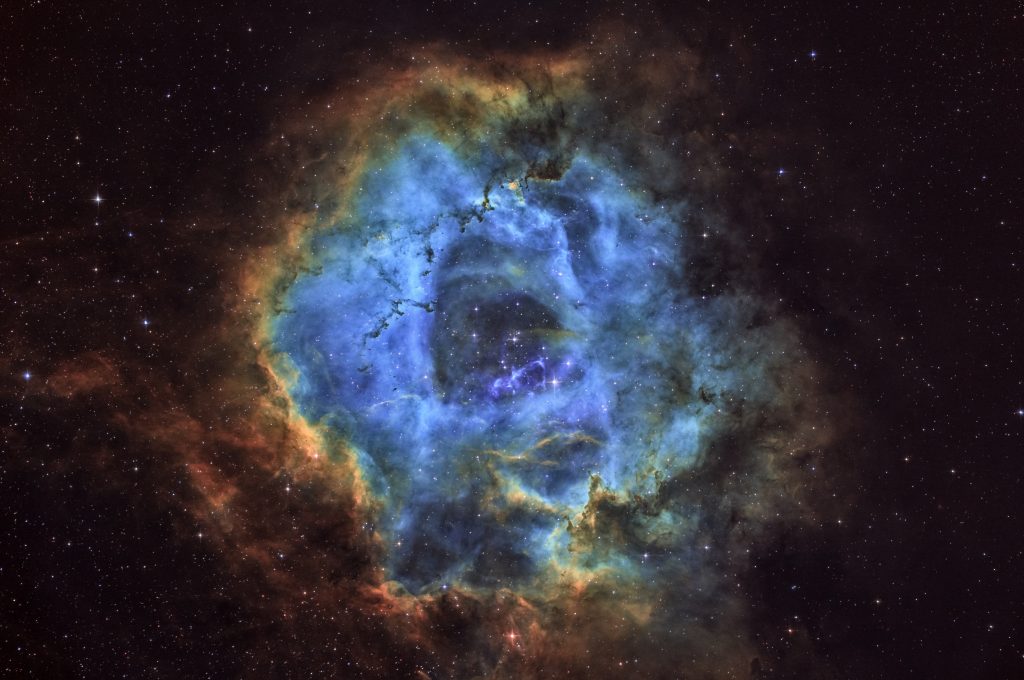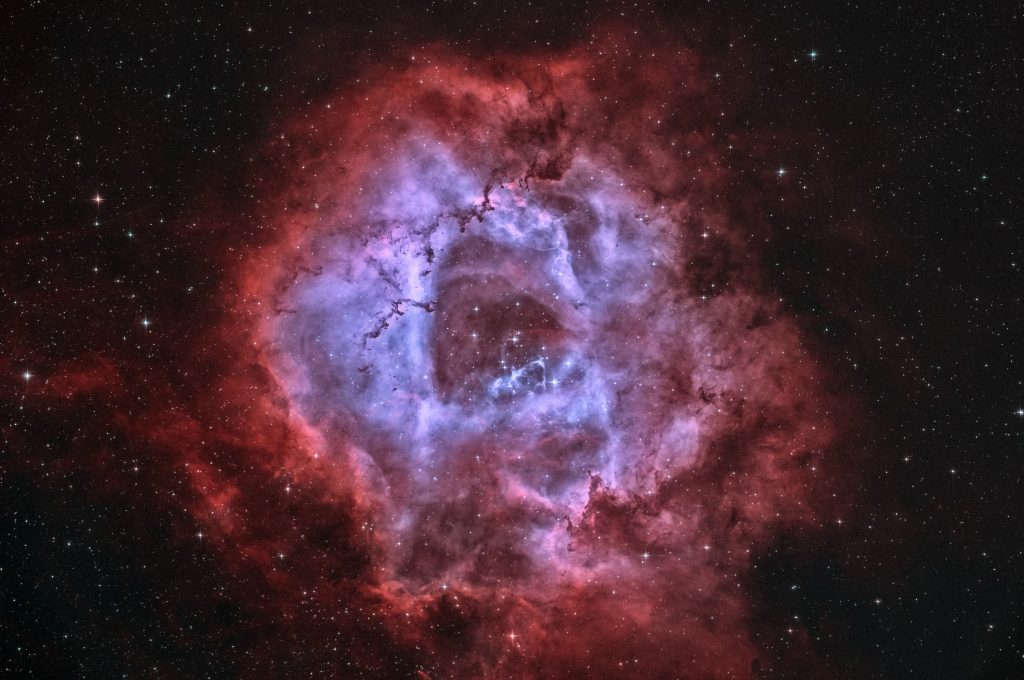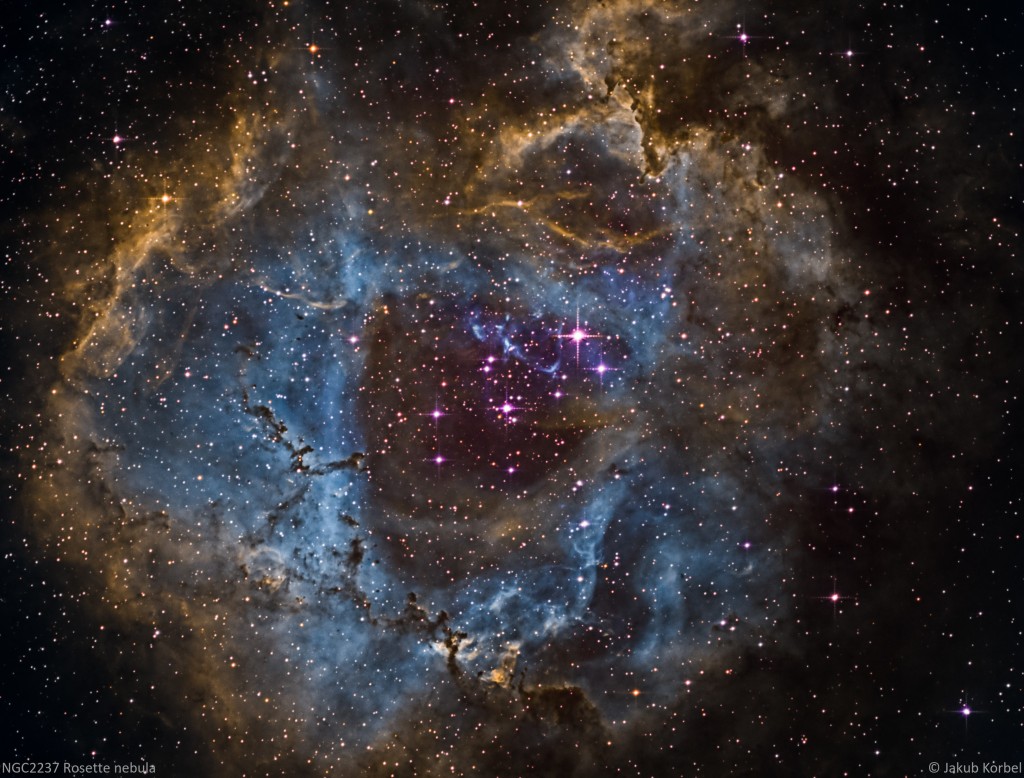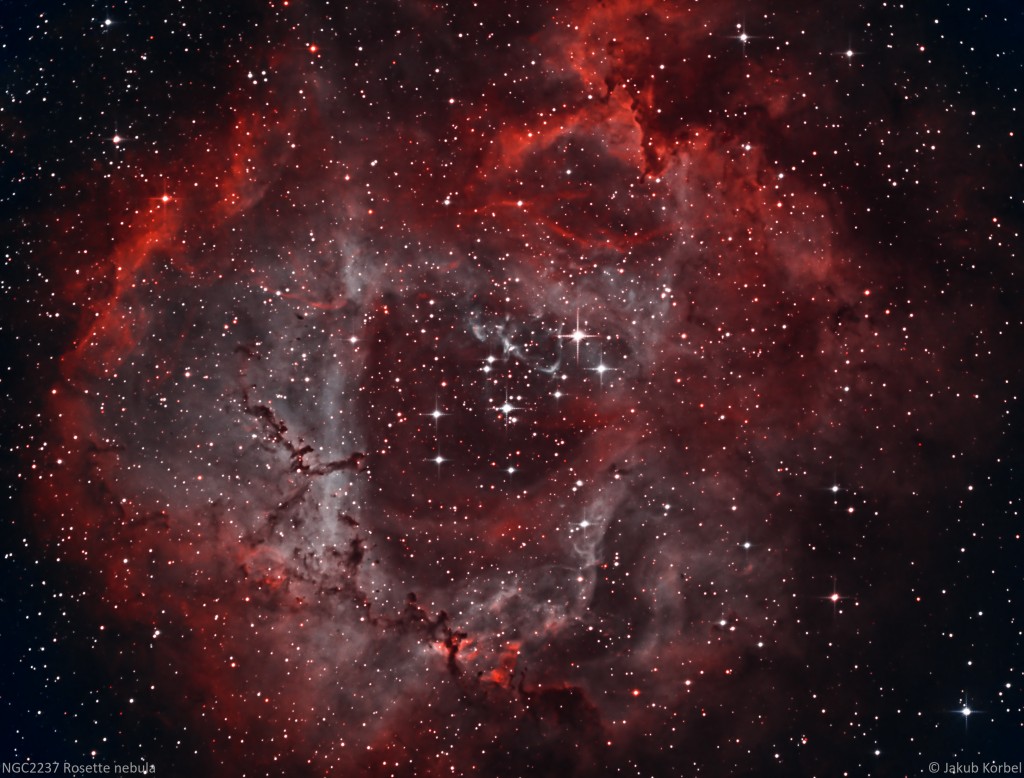I couldn’t imagine a better final object for the winter season. Rosette Nebula is my favorite H II region in the constellation Monoceros. At the same time, I used this deep-space object to test my portable Newtonian telescope with my new monochromatic camera ZWO ASI 2600MM. Well compared to the previous setup, this camera has much smaller pixels, which increases the requirements for the optics, specifically for the coma corrector. I am not happy with the star shape and for my planned trip to Namibia, I will try to find a portable refractor.
Here is a “fake” Hubble palette (SII, Ha, OIII):

And here more realistic bi-color variant (Ha, OIII, OIII)

| Telescope | Newton 150/600 mm |
| Aperture | 150 mm |
| Focal length | 570 mm |
| Mount | Rainbow Astro RST 135 |
| Autoguiding | ZWO 174MM, QHY Mini Guide Scope |
| Camera | ZWO 2600MM @-10°C |
| Corrector | MaxField coma corrector |
| Filters | Antlia Ha, OIII, SII 3 nm |
| Exposure | 94x300s, Gain 100, bin 1×1, |
| Date | 2022-01-12 |


